FLASHBACK 139: Trains, tigers and revolutions
TweetWELCOME back. I am delighted and humbled to say how much positive feedback I received with my last two FLASHBACK features, encompassing Chapter 1 of my forthcoming memoir. It's allowed me to be talked into giving you the second chapter this weekend, with Part 1 today.
I know working on the book has kept me from having my "finger on the pulse" of our sport for a while but I will jump back onto that again soon enough. In the meantime, here is Part 1 of Chapter 2. I hope you enjoy it and thank you to those readers and friends who assailed me to post this.
Your support means everything and never is taken for granted.
CHAPTER TWO – PART ONE
THE sound of a Soviet tank trundling down one of Budapest’s cobblestone streets was far too distinct and recent in memory for the family of my uncle Kálmán, his wife and two daughters. It didn’t matter that it was the middle of the night, the sound a chilling reminder of the fighting in the streets of the past few weeks before the inspired Hungarian Revolution of 1956 finally was squashed by the large Soviet invasion force.
Kálmán, my father Ákos’ gentle older brother, was pressed into the military as a young man, achieving the rank of colonel and leading probably one of the last cavalry units of the 20th century. A superb horseman, Kálmán literally was the last of the greats “hussars.” When the family fled Hungary during World War II, his wife Angela implored him to stay and it was one of my father’s greatest regrets he wasn’t more forceful in insisting his brother join the quest for a better life in a free world.
Communist forces invaded Hungary in 1944, the might of the Soviet Union soon declaring the country now as “the People’s Republic of Hungary.” Loosely translated, that meant by virtue of intimidation, falsified accusations, imprisonment, torture and murder, they suppressed all political opposition and Hungary now answered to the Kremlin in Moscow.
The Hungarian Revolution of 1956 was amazing because it happened spontaneously and was led by those very students indoctrinated by the Communist Party.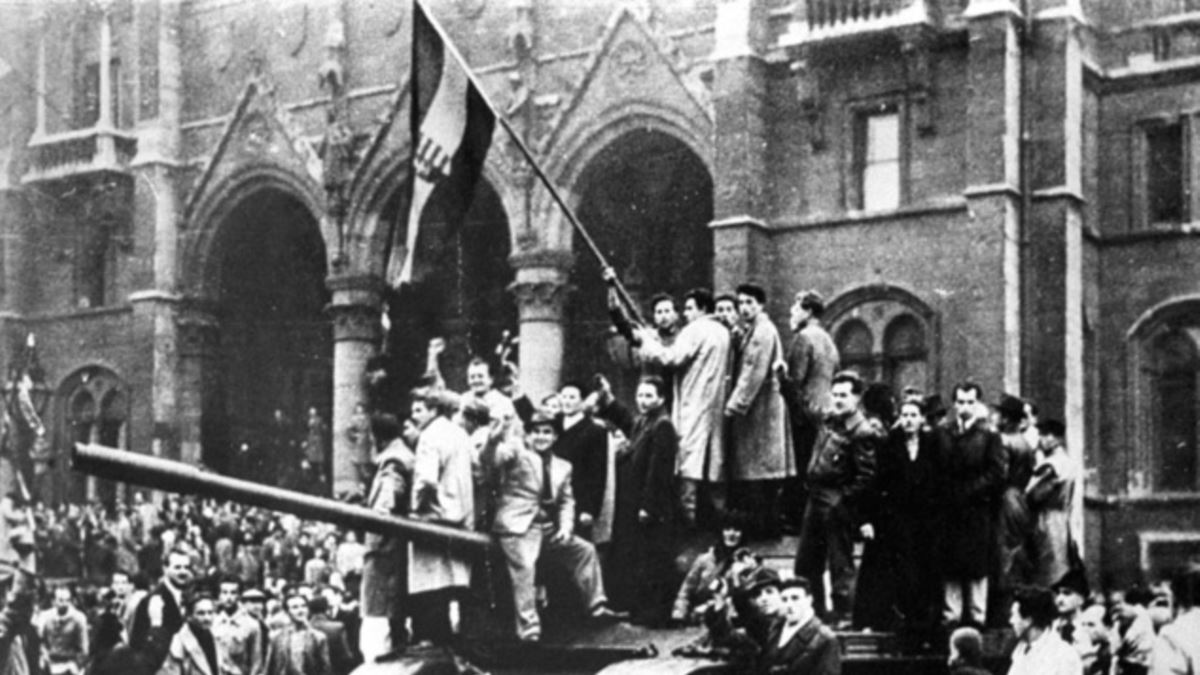
The Archbishop of Esztergom and leader of the Catholic Church in Hungary from October, 1945 to December, 1973, Cardinal József Mindszenty was a “Prince Primate” – a title affording him extraordinary privileges and which identified him as the representative of the Pope. He was uncompromising in his courageous opposition to fascism and communism in Hungary. It led to his imprisonment during World War II by the Nazis, and after the war, he opposed communism and the communist persecution in his country. For his trouble, he was tortured and given a life sentence in a 1949 show trial that generated worldwide condemnation, including a United Nations resolution. He was a supremely influential man the Communist regime really would have preferred dead.
The Hungarian Revolution started spontaneously on October 23, ultimately led to the Soviets fleeing, and immediately to the freeing of many political prisoners, including Mindszenty. The fighting still was on in earnest in the streets of Budapest when Mindszenty was freed, but he was lost and disoriented. He asked a passing man how to find the United States Embassy, the only place he knew he would be safe.
The man he asked was Kálmán Nagy, who not only recognised him but took him by the arm and led this frail figure of such religious significance through back streets and to the gates of the embassy. Effectively, Kálmán Nagy saved the life of one of the men the Communists most wished to see dead.
The significance of what Kálmán did cannot be understated when you realise Mindszenty lived in the U.S. Embassy for the next 15 years until finally allowed to leave the country in 1971. Despite Hungary’s pleas for assistance during the fighting, the free world turned a deaf ear. That was all the encouragement the Soviet forces needed to turn back around from the road to Moscow. With their forces and tanks reinforced and replenished, they arrived back on November 4 and by November 10 brutally put down the final vestiges of resistance. Star young Hungarian basketball brothers Les and John Hody were among the many to flee to safety during the brutality, others not as bold or as lucky.
Kálmán’s heart must have skipped a beat that fateful night when the sound of the lone tank rolled down the street in which he lived with his wife and daughters. He snuck a look between the window shades to see what was happening in the street, a Soviet tank rumbling to a halt. The street was grey and dank, illuminated by dim street lightning. But he could see the tank clearly and behind it, an old military khaki truck pulling up, out of which piled a unit of armed soldiers, running toward his building.
The tank stopped in the street below his apartment, its barrel slowly and distinctly raising to point directly at where Kálmán was standing. The sound of muffled voices and soldiers running up the stairs, others surrounding the building, meant his worst fears were confirmed, even as he tried to console and placate his terrified family. In a heartbeat, the apartment’s front door was kicked open and in rushed the soldiers, grabbing him roughly, even though he offered no resistance.
“Kálmán Nagy?” he was asked. He nodded and immediately was dragged from the room, his wife and girls in tears, screaming, howling, begging for his life, for an explanation, for something, anything. The remnants of the door was slammed behind the invaders as they left just as abruptly as they arrived, Angela and her distraught daughters rushing to the window to see Kálmán thrown into the back of the truck where he suffered the first of many severe beatings as the tank and truck drove away.
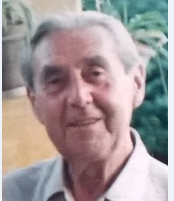 For years the family had no idea whether Kálmán (pictured) was alive or dead, Angela’s desperate pleas to indifferent and slightly amused authorities falling on deaf ears. No information was forthcoming. Was he in prison or in an unmarked grave? What was his crime? War service for the Hungarian cavalry? Was he arrested for being Ákos Nagy’s brother? Oh yes, that too was an option. My father may well have been a doctor of pharmacology but he also was working intimately within the Hungarian Parliament of the time on the development of an entirely new and revolutionary system of government.
For years the family had no idea whether Kálmán (pictured) was alive or dead, Angela’s desperate pleas to indifferent and slightly amused authorities falling on deaf ears. No information was forthcoming. Was he in prison or in an unmarked grave? What was his crime? War service for the Hungarian cavalry? Was he arrested for being Ákos Nagy’s brother? Oh yes, that too was an option. My father may well have been a doctor of pharmacology but he also was working intimately within the Hungarian Parliament of the time on the development of an entirely new and revolutionary system of government.
My family fled Hungary for Germany at Easter in 1945, but Ákos Nagy was a man high on a Soviet list of people marked for execution at the earliest opportunity. Could being Ákos’ brother have been Kálmán’s crime?
Listening to the news on the radio, reading the papers and following the whole situation unfolding in their homeland was nightmarish for my parents and their many Hungarian friends in Adelaide.
My father never forgave U.S. President Dwight Eisenhower for not offering Hungary military assistance when the resistance initially forced out the Soviets. He contended it would have stalled communism’s steady advance through Europe and the “iron curtain” would never have seen the light of day. Such speculation aside, the arrest of his brother was devastating news. Routinely tortured, all of his teeth bashed out, Kálmán Nagy spent the early years of his imprisonment breaking rocks in a quarry. His crime? He was the man who assisted Cardinal Mindszenty’s escape to asylum in the U.S. Embassy.
In Hungary’s terrible atmosphere of repression, fear and paranoia, someone had sought to advance their own political status by revealing to salivating authorities that Kálmán was the man who saved Mindszenty. It was the truth. Kálmán Nagy was a genuinely fearless hero. And he certainly paid a heavy price for it.
Released after six years, his family could not believe they had the man of the house home, greatly the worse for wear but neither broken, nor bowed. Meeting him in Hungary in 1974 and having him stay with the family in Adelaide for six months some years later are memories I hold very close to my heart. I never met a kinder or more considerate person, and his sense of humour was amazing for a man who survived what he did, first as a hussar in a world war that was leaving horses in the past. Then as a victim of his own fearless graciousness.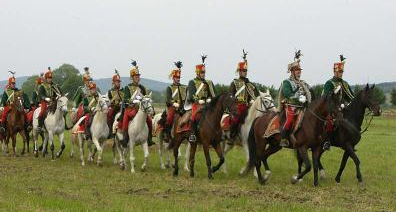
TOO young to know or even understand what my parents and grandmother, so far from home, went through during that harrowing period of the revolution and my uncle’s subsequent arrest and disappearance, it also was many years later I discovered something which probably should have been obvious.
Despite the family surviving on dad’s single income, now working at the Royal Adelaide Hospital and with a family of eleven to feed, somehow he also regularly sent money home to Kálmán’s family. Dad doing that didn’t necessarily qualify him for sainthood or anything because he was far from alone. Migrant families doing well in this great land of opportunity often sent monies home to distant relatives and not always just to family in occupied countries or those suffering beneath the communist yoke.
What is amazing to me is how he and mum managed to do that even before grandma died, before I was of school age and before mum returned to the work force. I have no recollection of ever going hungry, not having clean clothes, shoes and socks or of being in anything other than a happy, loving environment.
How they made those pounds, shillings and pence stretch the way they did is what still fills me with awe and admiration. Now I’m not suggesting for a second I had a lot of new clothes because believe me, with six brothers and a sister, we wore hand-me-downs and that was in all items. And sometimes by the time a pair of shoes reached my growing feet, there were impressive holes in the soles. Mum was gifted at using the cardboard from Kelloggs corn flake boxes to trace and cut the insole of a shoe and slip it inside so that you never even knew a hole existed. Until you stepped in a puddle.
Socks with holes? They were darned. Jumper elbows worn? That’s what patches are for! But the thing about it is I know I could hardly wait to get a jumper worn by Csaba, Huba and Szittya before it ever reached me. It was like some rite of passage. You were wearing an item of clothing which stood the test of time and gone through a whole life already as someone else’s primary item. It was as if that item now brought in-built experience and wisdom with it. Yeah, I know that makes no sense but as a little kid, when one of our four “old ’uns” was wearing a new jumper, it brought me as much joy as it did them because one day I would be wearing it.
My brother Geza never saw it that way. He liked to sing: “Second Hand Rose” from “Funny Girl” whenever one of the “young ’uns” appeared in pre-loved clothing, finding himself hilarious.
How we all fit at 5 Woodhurst Avenue at that time also remains a mystery, as does how far my parents went into debt to buy 7 Woodhurst. I just know they were incredibly resilient, resourceful and intelligent people who were likely the poster-children of the saying “when life gives you lemons, make lemonade.”
All I had to worry about was sitting on mum’s arm at the front door, waving at Lojzi Ugody (pictured) as he drove off home, imploring him to beep the ute horn for me, which he always did, as much to his own amusement and delight as mine.
Lojzi also gave me my first one pound note. No. Actually I “earned” it. He sauntered into our lounge room just as I perfected balancing and standing on one leg. “Lojzi Bacsi,” my toddler self exclaimed. “Look! I have a leg in the air.”
Suitably impressed, he said: “I will give you one pound if you can show me both your legs in the air,” he challenged. I immediately lay down on my back on the floor and raised both legs in the air.
Lojzi always had a great laugh. His face would turn rosy red when he was giving a good hearty guffaw and my response to his challenge mightily cracked him up. He reached for his wallet to hand me the note, still laughing at being outwitted by a toddler. He never tired of retelling that story.
We always managed to have life’s necessities covered. I don’t recall who took down the fence between 5 and 7 Woodhurst or how two wooden stobie poles were brought around into the new back yard and mounted lengthwise on bricked blocks as long bench seating.
Pretty sure it had Csaba’s fingerprints but they were just there one day, gravel laid up the driveways – there was no possible way to sneak home and get to the back door late at night without that crunching sound of your footsteps being heard – and, as I wrote earlier, grapevines planted.
They had pipes to grow up onto to provide a brilliant driveway canopy that went all the way across to our backdoor and beyond the outside toilet. The wire fence was up and the basket and backboard too, my brothers and the greater Hungarian community of Adelaide actively involved in the whole process.
All I remember of these developments are random visual flashbacks such as of the back yard chicken coop. We had some great layers, fresh eggs daily, before the coop was sacrificed to accommodate the new double backyard.
My brother Eors had great fun with George the rooster. Eors could hypnotise him and, among other things, make him cluck like a chook. Hmm. Come to think of it, that wasn’t really such a great trick. A big in-ground fishpond also was built, feeding the goldfish every morning one of mum’s favourite pastimes and her chance at some rare alone time.
As I said, somehow we always had the “necessities” covered, such as dad having a piano delivered, and Eors playing a major role in purchasing a massive volume of classical records. It featured all the big names, Tchaikovsky, Mozart, Beethoven, Liszt, Strauss, Brahms and meant after dinner, we would crowd into the lounge room and hear their finest work on our record player.
Not every night, but on special nights, dad sometimes unable to stop himself and miming what the conductor should have been doing. Csaba was getting into someone called Elvis and managed to buy himself a guitar during his teen years. It was mostly a prop for him though. I think he played it as much and as well as Elvis.
Ákos worked his way up to being the state’s No.2 ranked referee behind the legendary Lyall Clift and was possibly the only umpire in South Australian basketball who ran the sidelines backwards so as to never take his eyes off the play as it advanced down the court. It was a nifty talent which served him well.
The older boys were playing basketball, the young ’uns playing sport and dancing, dad heavily involved in the Hungarian community and basketball administration, mum choreographing the folk dancing and also returning to the work force as a teacher. Getting her credentials and paperwork from Hungary was an ongoing nightmare but after many months of frustration, they finally arrived, allowing her to secure her teacher registration with the Education Department.
We had procured a state-of-the-art reel-to-reel tape-recorder which is what mum taped the dancing records onto so she could rehearse the steps by herself before teaching them to her eager young dancers. I remember leaning on the cot in my parents’ master bedroom watching her working at perfecting a particularly difficult sequence of steps. She turned on the tape recorder and tried the steps, messed up, stopped the recorder, rewound it and did it all again. And again. And again. Finally she had it down to perfection.
“You’re getting pretty good at this,” I told her, much to her surprised delight. It was actually a cheeky thing to say. In Hungarian, as with many languages, there are two ways of speaking, a formal and an informal. To your elders or people you respect, such as your parents for example, you speak in the formal polite way. To others, your brothers, friends, you speak in the informal way.
I don’t know why, because I spoke to dad in the correct formal manner, but from the time I could talk, I spoke with mum in the informal way. On the one hand, it was cheeky, but on the other, she loved that. It made us bond closely in a way my siblings never experienced. But then I was the luckiest because I had her exclusively as a mother for far longer than any of them.
Our annual dentist excursions were a childhood highlight, believe it or not. Naturally we could only go to the Hungarian dentist. His clinic was at Semaphore which meant a bus into the city, the train to Woodville where we changed for the train to Semaphore. That red hen drove straight up the main road, stopping close to the beach. It was quite an outing.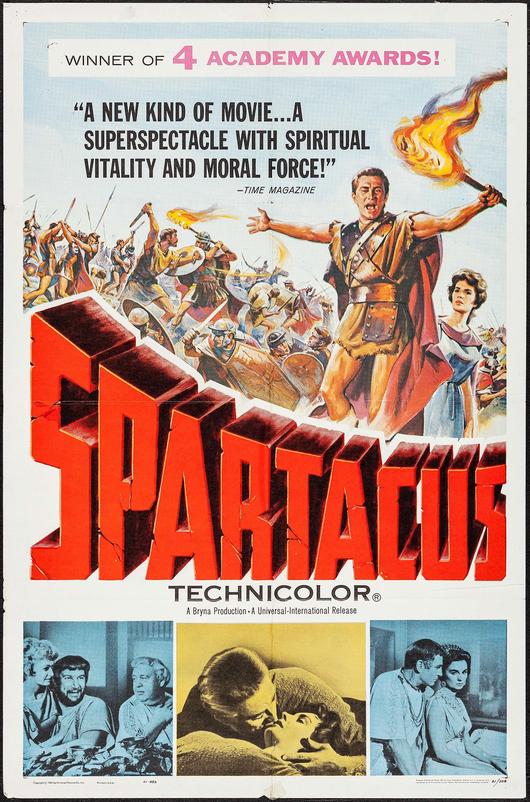
On one such visit, he had major issues pulling a tooth, his knee on my chest as he tugged to get that uncooperative sucker out. That was a bit of an ordeal so as compensation, when mum and I arrived back in the city, she took me down to Wests cinema and we snuck in and watched Spartacus, starring a new screen hero for me, Kirk Douglas.
These were the types of experiences my siblings did not have a chance to enjoy with her but, to their credit, none of them ever behaved as if they were in any way jealous of me. In fact, if anything, they seemed genuinely pleased for me and also for mum being able to focus on raising “Baba” when life’s many challenges made that impossible for her with them.
My siblings were great but within a few years, a couple of my brothers’ wives were not, singling me out because I received so much more attention than their spouses had growing up. Still unsure how that was my fault.
Dad also took me to see a movie on the sly on a weekday once, the John Wayne adventure flick Hatari. Have no idea now how that even came about. An outing mum and I enjoyed together was to Adelaide Oval to watch the SA Schoolboys Athletics Championship sometime in the early Sixties.
I already knew Adelaide Oval like the back of my hand because while mum was teaching folk dancing on Saturday afternoons at the nearby YWCA, I often would spend the day in the gardens or over at Adelaide Oval. You could do that then without any fear of a child being kidnapped or worse. The AO gatekeepers weren’t all that tough on a little kid wanting to wander in and watch a bit of footy or cricket and pretty soon they were recognising me. This time we were at the oval though to watch Geza compete in the shot put.
At the end of a school day, he was walking his bike through the Unley High grounds past a group of boys training for the track-and-field championship. Intrigued, he went over, picked up what looked like a cannonball and hurled it twice as far as anyone on the team. The schoolboys championship was coming up so he immediately was drafted onto the Unley High team to take part in the shot event. He had no idea, no technique and no uniform. Someone secured him the light blue singlet of Unley High and I remember him walking out onto the ground in his singlet and long grey school trousers. He picked up the shot, didn’t know anything about tucking it under his chin or whatever, and just threw it. With that throw, he set a new South Australian state record for the shot put which lasted well into the 90s before it was broken.
While everyone was broadening their lives, mum decided I too should have a pastime so enrolled me with a piano teacher. The lady had a lovely home on a side street next to Prince Alfred College where she taught her students. I attended lessons every week and practiced at home for an eventual recital evening featuring all of her students. I hated it. Well, I hated practising for an hour at home on dad’s piano every day.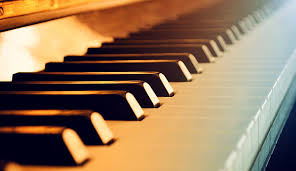
PIANO MAN? Unfortunately, this wasn't the keyboard I was most interested in at the time.
I’d have ridden home from school and now wanted to be out in the street, kicking the football with John Kanas, Ercolino Mastrullo and the Morris brothers, Wayne and Robert. Kick-to-kick or playing brandy where you chased others down and had to “brand” them with a tennis ball, was kid paradise. Banging away alone at the piano keys was not.
Finally I had the piece I was to play at the concert, a two-handed epic known as “The Little Mouse Likes Cheese.” The concert was at a suburban RSL hall near Unley Shopping Centre and I was about the fourth student on. I walked up onto the stage, placed my sheet music on the piano, sat down and tentatively played my little tune. My heart was pumping madly but I nailed it without a single miscue and received the appropriate ovation from the crowd full of parents, families and other poor buggers coerced to come along.
Mum could not have looked more pleased and I was equally rapt that one, it was over, and two, we would be having a recess from piano lessons for a while. As it turned out, it was forever after I was bucked from the saddle by a horse and landed awkwardly, breaking my left arm. Well, I may be colouring that story a wee bit.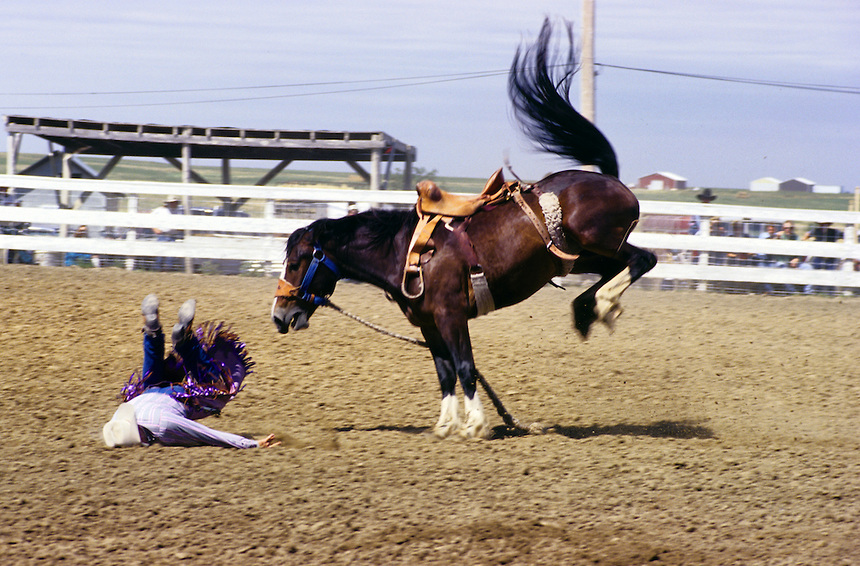
BUCKED: Unlike my uncle, I was no horseman ...
The “horse” was actually my brother Huba who had invented a new game in the backyard, “bucking broncos.” He was down on all fours, I got onto his back and then he’d buck and try to dislodge me. Well he succeeded, and I broke my arm in the process, trying to break my fall.
The Royal Children’s Hospital was familiar with me by now – bump removed from under my tongue, tonsils out, stitches into a left leg wound after catching it on a nail climbing through a window at a neighbouring building site – my arm placed in a plaster cast.
Piano lessons were resuming soon so I sat mum down and used my broken arm as an excuse for not wanting to continue. She finally agreed but made a point of saying: “One day though, when you’re much older, you will regret that you gave up this chance to learn and play the piano. And when that moment comes, I want you to think of me and remember I did tell you.”
Every time I regret not being able now to play the piano, I hear her saying that to me. And it is way more often than I expected.
FOR the 1967 Winter Season, the Norwood-Budapest under-12 boys team had a new coach and I returned to a fulltime playing role. It was something of a relief because in all honesty, as a coach I’d found myself uncoachable. Regrettably I now knew what my sister put up with and fully sympathise. In truth, it was great to just be 11 and free to play without worrying about subs and how other players were going.
But everyone wanted our 3-on-3 competition to continue so it did, new players to the team quick to buy into this additional Saturday afternoon activity.
Selected again for the “District” team to play Victoria in the annual under-12 series, this time it was at Melbourne’s storied Albert Park Stadium, a mystical mythical place about which we’d only heard hushed and reverential stories. Did it really house eight courts?
We loaded into the economy section of The Overland train to Melbourne, me with a neatly packed borrowed black tracksuit from Forestville Stadium’s vigilant doorkeeper Mrs Ollie Cosgrove, ten kids, a coach and a couple of additional adult chaperones.
Peter Ali was West Adelaide’s best junior at that time and we quickly became fast friends, a friendship that further blossomed on this trip.
His mother, the lovable and famous Mrs Ali, and his brother Robert, who would become a doctor, also made the trip. Robert and I were sitting together for a long portion, a few hours in fact, and we talked at such length I still remember it today. Mrs Ali was the most supportive parent I saw in my time as a junior basketball player. These days, virtually every child playing sport has a parent or both attending games, sometimes, sadly, living vicariously through them.
That wasn’t the case when I was a kid. Parents had important things to do on weekends, were working two jobs, helping neighbours, building all manner of things. Kids had their own lives. My mother saw me play the fateful under-12 preliminary final of the previous season and my games for the District team against Victoria at Forestville. That was all.
I never felt as though I was deprived by that or that my parents didn’t care. But Mrs Ali was the exception to the “very few parents” rule. She never missed a game and never watched a game she didn’t play. The bottom row of the seating at Forestville Stadium between the end of the West team bench and the end of the stand was always left clear for Mrs Ali. She could not sit still. She moved on every play and up and along that sideline seat, riding every play and doubly so any passages involving Peter. She was so much fun to watch.
I think as little kids not yet exposed to cynicism, we all knew how much she loved her son and how much she enjoyed this whole basketball experience. Her behaviour never was the subject of any derision. In fact I suspect we all secretly wished we had someone in our lives who cared and loved us as much to be so invested in our games. Suffice to say, everyone loved her and when Peter and I became friends and I got to know her, she was the sweetest and kindest person you would ever want to meet. Just don’t sit next to her at a junior game.
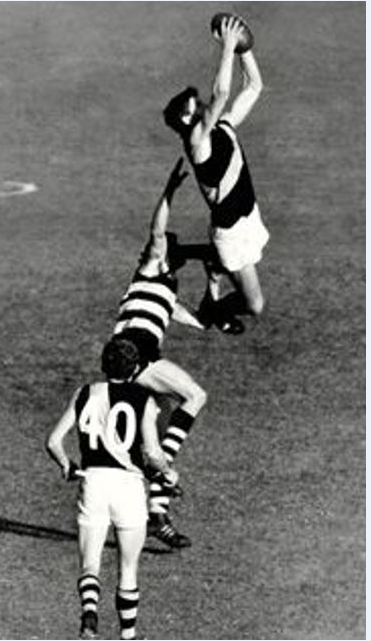 We were being billeted in Melbourne and our weekend families were there to collect us at the station. I couldn’t believe my luck. Neil Kerley’s magnetic presence converted me into a Glenelg SANFL supporter and the Tigers’ equivalent in Melbourne is Richmond. The family I was assigned were mad Richmond fans so we immediately had common Tigers ground.
We were being billeted in Melbourne and our weekend families were there to collect us at the station. I couldn’t believe my luck. Neil Kerley’s magnetic presence converted me into a Glenelg SANFL supporter and the Tigers’ equivalent in Melbourne is Richmond. The family I was assigned were mad Richmond fans so we immediately had common Tigers ground.
Watching the VFL replays in Adelaide, I not only already was a huge fan of Kevin Bartlett and Billy Barrott (below, right), but also of new faces such as Royce Hart (left), Francis Bourke and Kevin Sheedy. Our ability to bond over our common Tigers footy love helped make the stay truly enjoyable and they were fabulous hosts. The oldest son was playing against me for the Vics and his younger brother also was likeable kid, but the parents were great.
They took me out to see the sights of Melbourne but on the Friday, all the South Australian players were collected and taken to have our first look at the famous Albert Park Stadium.
We arrived mid-afternoon in the vast carpark, ten very excited little basketballers heading in to where legends such as Barry Barnes, Billy Wyatt and Lindsay Gaze did their thing. We headed inside and were blown away by the sight and grandeur of Court One – Court Nine out the front had not yet been added - before running on to see all the other courts and get some shots up.
We couldn’t shoot on hallowed Court One because there was a full-on scrimmage underway with some very scary looking basketball players. Actually, I found what they were doing, the way they were laughing and goading each other but working tirelessly on the floor – playing for sheep stations – far more compelling than firing up a few shots on Courts Six or Four.
Back quickly from marvelling at the vastness of the venue, even more impressive in its empty and immense state, I settled down on the sidelines to watch these men going at it, playing basketball in an aggressive, physical and hellacious manner. They all seemed huge too.
The ever-controversial future Hall of Famer Ken Cole (below, right) was out there, barking orders, and I had another big “first,” spotting super athletic and multi-talented African-American athlete Willie Anderson. His skills were off the chart and he was the first black American I met in my sheltered little life. I met American players before, chatting regularly with Chet Hildebrandt and Steve Stewart, two friends from memory playing at West Torrens and Centrals in Adelaide, and of course West’s Bill Stuart, the first import in Australian basketball. (He narrowly pipped Bob Craven as “the first” and a couple of others who played in Canberra, Sydney and Melbourne).
Guys just were not dunking much in those days so when Willie split the defence and threw one down, it was jaw-dropping stuff. Our District team was assembled again and the various Victorian families showed up to take home their billets. We were waiting outside as everyone was collected but when my family arrived, I mentioned what was happening on Court One.
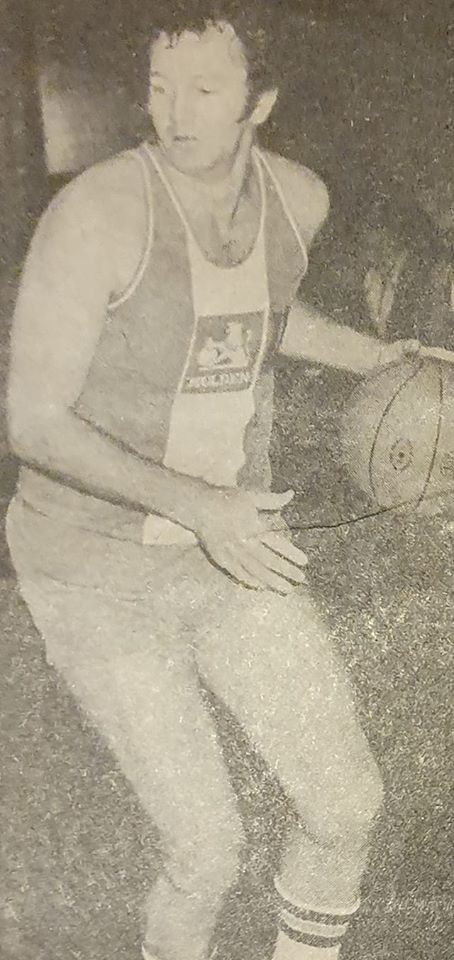 They were just as excited at the prospect of seeing all these great players going hammer-and-tongs so we headed back inside. That caught Willie’s eye and when they were finished about a half hour later, he sauntered over. My Victorian counterpart already knew him and they were into a quick dialogue before he introduced me to this towering and compelling athlete.
They were just as excited at the prospect of seeing all these great players going hammer-and-tongs so we headed back inside. That caught Willie’s eye and when they were finished about a half hour later, he sauntered over. My Victorian counterpart already knew him and they were into a quick dialogue before he introduced me to this towering and compelling athlete.
Willie could not have been more generous with his time or nicer in demeanour. He asked me all about our District team and would we beat Victoria, about my own background and basketball connection. He said he knew of the “Nagy brothers” though who knows if he did? It still was a great thing to say and he promised us both he would be at Albert Park that evening to watch Game 1 of the series.
Michael Ahmatt was the first indigenous person I met and Willie Anderson, who later would try out for North Melbourne in the VFL, was the first African-American I met. Both left me with the most positive of possible impressions that stayed with and influenced me for a lifetime.
And Willie was absolutely true to his word, showing up that evening to watch Victoria beat us in overtime with a little bit of home-cooking wind assistance. Even I fouled out and that was something which occurred maybe three times in my entire career.
He came over to chat and offer his condolences post-game, promising he would return for Saturday’s fixture, considering how thrilling this opening match had been. Playing at Albert Park and on Court One was such a high for many of us that we probably spotted the Vics 10 points before settling down. It was a cruel way to lose in the end and the dad of my host family was quick to pull his younger son into line when he started to gloat on the drive home. I think we all knew the Vics were, shall we say, “lucky?”
Game 2? Not so much. My memory is they killed us to wrap the series, completing the sweep in Sunday’s dead rubber before we headed for The Overland and the trip home. It was a memorable experience and I loved every second. Three games in such a short period of time meant sleeping in the economy seats on the train trip back to Adelaide was much easier than on the way over.
Our excitement then at everything – missing a school day, travelling overnight, being on a train, going to play basketball, heading to Melbourne, Albert Park Stadium, all of it – was so thrilling that sleeping was patchy at best.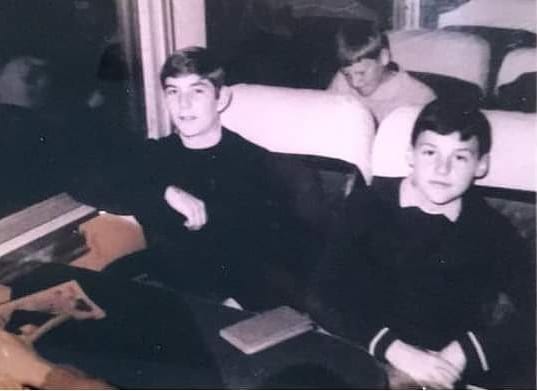
WOUNDED: Me, right, back on the Overland, Peter Ali hiding his treachery behind me.
But on the way back we were all pretty much out of it until early morning, though a bit more bright-eyed and bushy-tailed as The Overland pulled into Murray Bridge for a short stay. A few passengers disembarked but a steady stream left the train, heading for the kiosk at the station.
Coach Grant Surfield said we were not to leave the train. Peter Ali and I were curious though and anxious just to get some fresh air so we headed for the carriage door.
I opened it out and leaned outward, making a huge show of taking in a breath of clear air. As I swung the door back to close, Peter leaned forward to get a view of the station and unwittingly knocked me off balance. I desperately grabbed for the door handle as I fell and it was lucky I did, my right leg wedging firmly between the train wheels and the side of the cement platform.
Peter was in shock, as most likely was I, though I was clinging onto the door handle, unable to pull myself out, wedged firmly in. I could see along the side of the train and envisage those mighty steel wheels starting up and amputating my leg in no time at all. A couple of men in railway uniforms at the station-master’s hut saw us and ran across the platform toward me.
I looked back to see what Peter was doing and, like most little kids in such situations, he did the first thing that popped into his head. He ran away. Self-preservation is your Number One priority as a kid. These two hefty men from the station-master hut reached me and were leaning down and tucking under my arms.
With a “one, two, three,” they heaved me out, my jammed leg scraping the length of the way. I felt some of my flesh tearing. “Can you walk?” they asked me. I didn’t care about that. I just wanted to get straight back onto the train. For starters, we were told not to get off and here I was, hunched over on the platform.
Now these two strangers wanted to take me to the station-master hut to fill out an accident report. Say what? What if the train leaves without me? I was in full panic mode as they virtually carried me toward the hut while I turned to see passengers en masse returning to The Overland.
This was a disaster. I was praying Peter told Grant what occurred but not confident of anything, except that missing the train was now a distinct possibility. I was on the verge of tears. They hustled me into the hut and one of them went looking for the correct paperwork while the other asked me details of what happened. I hurriedly told him the little the incident entailed, while staring out the window watching as what looked like the last of the passengers boarded.
“Look, I have to go and now,” I told them. They insisted that because I was injured as a result of the fall, they must get a formal statement but said they would ring ahead and we could report the details at Adelaide Railway Station.
They were waving as the train was starting up to leave, catching the driver’s attention as they rushed me back toward my carriage door. An arm each under my armpits, I barely was skimming the platform surface as they got me to the door and I finally breathed a sigh of relief, back on the train.
Grant had done a head count and appeared as the door shut behind me, clearly looking for his last player. It was a case of “oh, there you are,” Grant none the wiser and me indicating I was going to use the loo as we pulled out of Murray Bridge.
Dropping my strides in the toilet, the skin of both sides of my right thigh was badly grazed but not bleeding too badly. Using some moistened paper towelling, I was able to bring it to a halt, drying the area, before dressing and returning to my seat, trying not to limp too noticeably. It was hurting as I looked around to try and find Peter.
He was sitting in a back seat of the train carriage, head buried in a book, trying to look innocent. I wasn’t happy with him and let him know it. To this day we have a “thing” where I talk about the time he tried to kill me and he counters with “where’s my trophy?” from a story I may get to later. Or not.
TOMORROW: Part 2 as I learn more about my brothers, how Huba became our best baller and the infamous "Battle for Woodhurst Avenue's honour."


